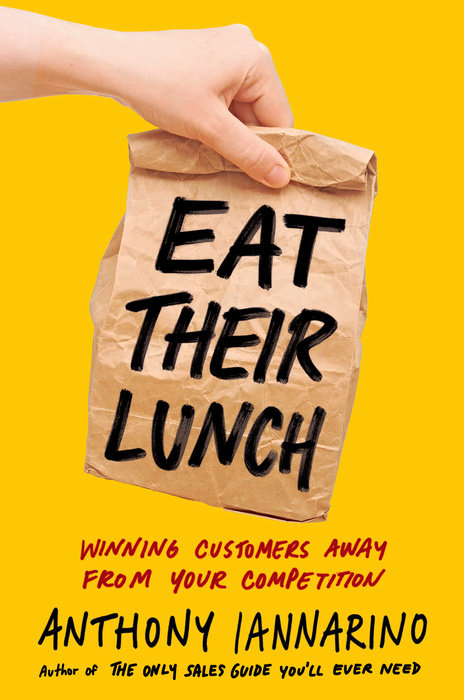The Gist:
- To be valuable to your clients, you need information disparity, so you can give them information and insights they wouldn’t otherwise have.
- Your clients’ preference to buy from you reflects your ability to help them make better decisions than they might make without your help.
- Maintaining information disparity requires that you continue to learn and discern what your clients need to know.
When you sit down with your dream client, you are obligated to create value for them. The more value you create for the contacts and decision-makers with whom you meet, the greater your chances of creating and winning a new opportunity. Create too little value, and your opportunity will evaporate faster than they can say “Thank you for your time. We’ll get back to you soon.”
To create value inside the conversation you are having with your prospective clients, you must help them make a good decision for their business, one that will help them improve their results. That requires a disparity of information: other than some details about the company and their industry vertical, you must know more than the decision-makers, decision-shapers, and stakeholders who will participate in any future change initiative that results from your conversations. Your superior expertise will help them make better decisions and reach better results.

Creating Information Disparity
Let’s start by giving up any notion that you are going to know more about your client’s individual business or their industry vertical. Because your contacts work in their business every day, you won’t match their understanding about their day-to-day operations or how they get things done inside their four walls. Much of the time, the decision-makers you meet with are industry experts who’ve spent years or decades working in a particular vertical. Fortunately, you don’t have to surpass their expertise to be of value to them.
The area where you need information disparity—in your favor—lies at the intersection of your business and your client’s business. First, you need more knowledge about your industry than your contacts could ever hope to possess (don’t worry, they have little interest in trying to match you here). Second, you need greater information when it comes to the nature of their challenge. Third, you need to know more than your contacts about how to make the best decision to improve their results.
Win customers away from your competition. Check out Eat Their Lunch
Your Business and Your Industry
Just like you can’t compete with your client’s knowledge of their company and their industry—like an outclassed boxer, just stay on your stool when the bell rings—your client should be at the same disadvantage when it comes to your company, your industry (B2B sales), and how best to produce the results you can deliver.
The first way you create an information disparity in your favor is by recognizing that your prospective clients rarely make decisions about what you sell and the results that you can help them produce. A company that makes a decision about what you sell every five years has little experience with your industry outside of their existing partner. Because they are heads-down working in their business, they don’t spend time studying other industries and companies.
You, on the other hand, help your contacts and your client companies produce those same results every day. Your experience serving different companies in different verticals provides you with more information about your industry.

The Nature of the Client’s Challenges
Business results follow certain patterns. The client experiences a challenge of some sort, they seek out a way to improve their results or solve some problem, they find a solution, they execute it, and they generate the new and better results they were after. The world, however, keeps turning, and changes in their industry and context makes their solution start to fray around the edges. Before long, exciting new problems (or a version of the old ones) start cropping up, calling for a new solution and potentially a hungry new partner.
Note: you can play one of two roles in this cycle. As the incumbent partner, you can start nudging your clients toward your competitors by being complacent, entitled, or negligent when it comes to creating new value. But you can also be proactive, sharing the insights that allow you to capture mindshare and teaching the client why their results soon will be—or are already—mediocre.
As a salesperson, you engage with these cycles every day at work, so when it comes to information about the nature of the client’s challenge, your information advantage should be clear and significant. Use your experience and your training to recognize why your clients have the problems you can solve, what factors will cause them to change, as well as what future challenges they will soon face unless they do something to prevent them.

The Ultimate Disparity
Because you solve your client’s challenges every day, you have great information about the choices a client might make to improve their results, what works under certain conditions, and conversely what leads to failure or even greater challenges. This situational knowledge comes from your experience helping clients change, but also from watching them make mistakes after choosing the wrong solution or partner.
Because your clients don’t live in your world, infrequently buying what you sell, they don’t often know how to make the required decisions effectively, something you know well. You have an advantageous information disparity when it comes to the questions the client should ask, the models they should explore, the conversations they need to have, how one solution would work better than others in their circumstances, their ability to execute that solution, and what approach will provide the best overall results.
Do Good Work:
- In what areas do you know what your client will need to know so they can understand their problem?
- In what areas can you fill in the gaps in your client’s knowledge, experience, or both?
- What do you need to work on to be able to ensure information disparity and retain your edge?








.jpg?width=768&height=994&name=salescall-planner-ebook-v3-1-cover%20(1).jpg)


